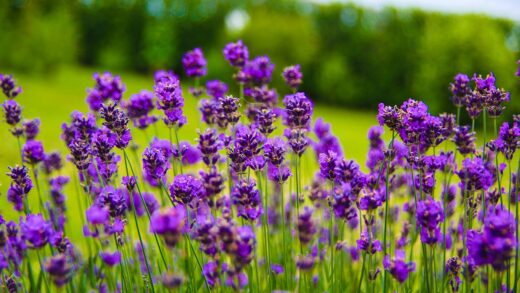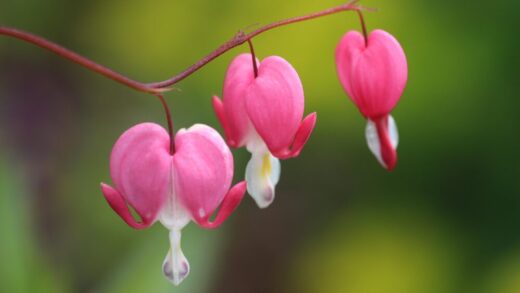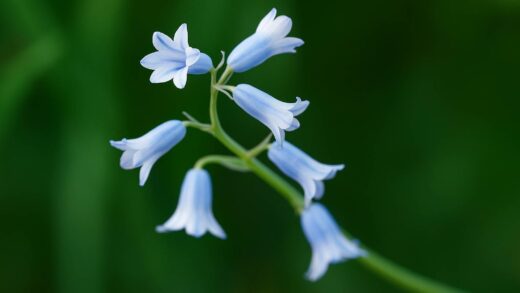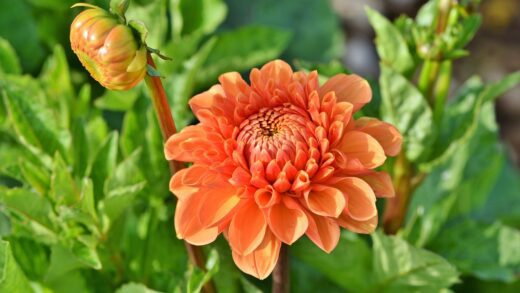Pruning is a horticultural art form that, when applied correctly to a gardenia, can transform it from a merely adequate plant into a truly spectacular specimen. It is a vital practice that goes far beyond simple aesthetics; it is a key tool for managing the plant’s health, shape, and, most importantly, its flowering potential. A proper pruning strategy encourages the development of a strong framework, promotes bushier growth, and ensures that the plant’s energy is directed toward producing an abundance of its famously fragrant blossoms. For the dedicated gardener, learning when and how to prune a gardenia is an essential skill that pays immense dividends in the beauty and vitality of the plant.
Many gardeners, especially those new to gardenias, are often hesitant to take pruning shears to their prized plants, fearing they might cause irreparable harm. However, a gardenia that is left unpruned can become leggy, sparse, and top-heavy over time. The lower branches may lose their leaves, and the overall form can become open and unattractive. Pruning is the corrective measure that maintains a dense, compact, and appealing shape. It stimulates the plant to produce new growth from latent buds along the stems, resulting in a fuller, more lush appearance.
The timing of pruning is arguably the most critical factor to understand. Gardenias form their flower buds on new wood that grows after the current blooming cycle finishes. This means that pruning at the wrong time of year can inadvertently remove the very growth that would produce the next season’s flowers. Mastering the gardenia’s pruning calendar is therefore essential to avoid sacrificing a year’s worth of blooms. The goal is to shape the plant and encourage new growth immediately after it flowers, giving it ample time to develop and set buds for the following year.
Beyond shaping and encouraging blooms, pruning serves several other important maintenance functions. It is the primary method for removing any dead, damaged, or diseased wood, which improves the plant’s overall health and hygiene. It also allows the gardener to improve air circulation through the center of the plant, a key preventative measure against common fungal diseases that thrive in stagnant, humid conditions. Through a few well-placed cuts, you can significantly enhance the long-term health and resilience of your gardenia.
The purpose and benefits of pruning
The primary and most visually apparent purpose of pruning a gardenia is to maintain its size and shape. Without regular trimming, a gardenia can grow in a rather unruly fashion, with some branches becoming overly long and others remaining short, leading to an unbalanced appearance. Pruning allows you to create and maintain a desired form, whether that is a compact, rounded shrub, a more formal standard (tree form), or simply a neat and tidy version of its natural shape. This shaping not only enhances the plant’s aesthetic appeal but also ensures it fits appropriately within its designated space in the garden or home.
More articles on this topic
A second major benefit of pruning is the promotion of bushier, denser growth. When you cut back the tip of a stem, you remove the apical bud, which produces hormones that suppress the growth of buds further down the stem. Once this apical dominance is removed, the latent buds along the sides of the stem are stimulated to grow, resulting in multiple new branches forming where there was previously only one. This is how pruning transforms a leggy, open plant into a full, dense shrub with lush foliage from top to bottom.
Perhaps the most compelling reason to prune a gardenia is to increase its flowering capacity. Gardenias produce their flowers on new growth. By pruning the plant after its blooming period, you encourage a flush of new stems to develop over the summer and autumn. It is on this new growth that the flower buds for the following year will be set. Therefore, a well-pruned plant will have significantly more new stems and, consequently, a greater number of potential flowering sites, leading to a more spectacular floral display.
Finally, pruning is an essential tool for plant health and sanitation. It is the process by which you remove any wood that is dead, broken, or shows signs of disease. Cutting out these compromised parts prevents the potential spread of pathogens to the rest of the plant and eliminates hiding places for pests. Pruning to thin out overly dense areas also improves air circulation through the plant’s canopy. This increased airflow helps the foliage to dry more quickly, which significantly reduces the risk of fungal diseases like powdery mildew and leaf spot.
The best time to prune
The timing of your pruning is absolutely critical for gardenias and is dictated by their blooming cycle. Gardenias develop their flower buds on the growth that is produced in the late summer and autumn of the previous year. These buds then overwinter on the plant and open in the spring or early summer. Because of this cycle, the one and only ideal time to perform any significant structural pruning is immediately after the plant has finished flowering. For most common gardenia varieties, this will be in the summer.
More articles on this topic
Pruning in the summer, right after the last flowers have faded, gives the plant the maximum amount of time to produce the new growth upon which next year’s blooms will form. This post-flowering trim encourages a flush of new stems throughout the remainder of the growing season. These new stems will mature and set flower buds before the plant enters its winter dormancy. This ensures that you are not sacrificing any of your future floral display.
You should strictly avoid pruning your gardenia in the late autumn, winter, or early spring. If you prune during this period, you will almost certainly be cutting off the invisible, nascent flower buds that have already formed on the existing stems. This is the most common reason why a healthy gardenia might fail to bloom. While it might be tempting to “tidy up” the plant in the spring before it starts growing, you must resist this urge and wait until after the flowering season is complete.
While major pruning should be reserved for the post-flowering period, there are minor trimming tasks that can be done at any time of year. This includes the removal of any branches that are clearly dead, have been damaged by wind or accident, or are showing obvious signs of disease. Removing this type of wood as soon as you see it is good practice for the plant’s health. The practice of deadheading, or removing spent flowers, should also be done continuously throughout the blooming season to encourage more flowers and keep the plant looking neat.
Essential pruning techniques
When you are ready to prune, the first step is to assess the overall shape of your gardenia. Step back and look at it from all sides to identify any branches that are excessively long, growing in an awkward direction, or crossing over other branches. The goal is to create a balanced, pleasing shape. Your first cuts should be aimed at reducing the overall size and re-establishing the desired form. You can typically remove up to one-third of the plant’s total volume in a single pruning session without causing undue stress.
For each cut, use a pair of clean, sharp pruning shears or loppers. A sharp blade makes a clean cut that will heal more quickly and is less likely to crush the stem tissue, which can invite disease. Always make your cuts at a 45-degree angle, about a quarter-inch above a leaf node or a side branch. Cutting just above a node encourages new growth to sprout from that point. When thinning out the plant, trace a branch back to its point of origin on a larger stem and cut it off flush.
One of the most important techniques for maintaining a full and bushy plant is to focus on cutting back the tips of the main branches. By trimming the outer growth, you encourage the plant to branch out and become denser. Pay special attention to any long, unbranched stems that detract from the plant’s shape. Cutting these back will force them to produce multiple side shoots, which will help to fill in any sparse areas of the plant. This is key to avoiding a leggy appearance.
After the initial shaping, the next step is to perform “sanitation” pruning. Carefully inspect the interior of the plant for any branches that are weak, spindly, dead, or rubbing against each other. Remove these completely. This thinning process is vital for improving air circulation through the center of the shrub. Good airflow is one of the best preventative measures against fungal diseases. This also allows more light to penetrate into the interior of the plant, which can encourage fuller foliage growth from top to bottom.
Pruning for rejuvenation
Over time, an old or neglected gardenia can become very woody, overgrown, and unproductive, with most of its foliage and flowers concentrated at the very tips of long, bare stems. In such cases, a more drastic form of pruning, known as rejuvenation or renewal pruning, may be necessary to restore the plant’s vigor. This is a process that is best done over two to three years rather than all at once, as a single, severe pruning can be too shocking for the plant.
The first year of a rejuvenation prune involves cutting back about one-third of the oldest, thickest stems to about 12 to 18 inches from the ground. Choose stems from different areas of the plant to maintain a somewhat balanced appearance. This hard cutting will stimulate the growth of new, vigorous shoots from the base of the plant. During this first year, you will be sacrificing some flowers, but it is a necessary step for the long-term health of the shrub.
In the second year, you will repeat the process, cutting back another third of the old, overgrown stems. By this time, the new shoots that grew from the previous year’s cuts will be starting to mature and fill in the plant. This selective, staggered removal of old wood allows the plant to gradually replace its old, unproductive framework with fresh, vigorous, and floriferous growth without ever being completely bare.
By the end of the third year, you will prune out the last of the old, original stems. At this point, the entire plant will be composed of new growth from the past three seasons. The result will be a completely renewed, more compact, and significantly more productive gardenia. After this three-year rejuvenation process is complete, you can return to a regular annual maintenance pruning schedule to keep the plant in its new, healthy shape.




















